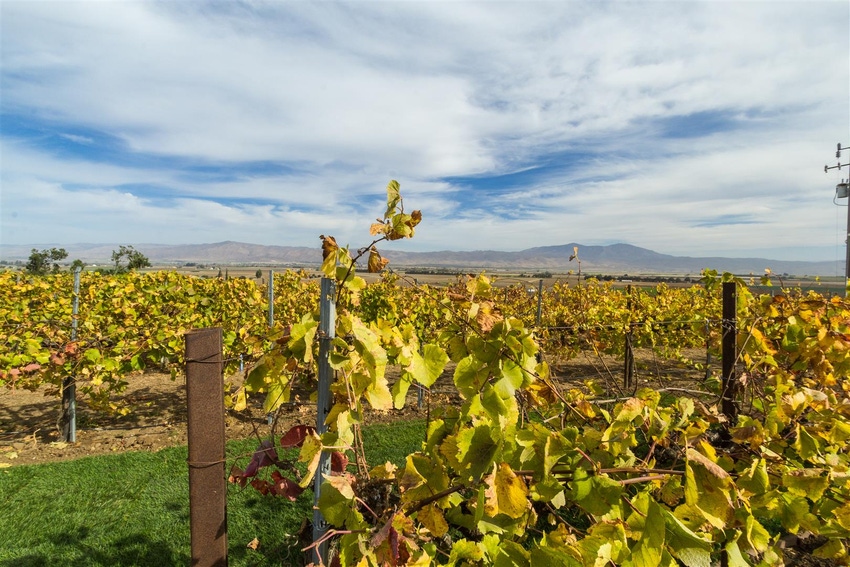
Wine grape growers in the popular Santa Lucia Highlands (S.L.H.) of Central California expect a smaller crop, which could translate into higher quality wines from their 2016 harvest.
Harvest should begin in September, according to Dave Muret, executive director of the Santa Lucia Highlands Wine Artisans as veraison is winding down.
Pinot Noir grapes – the region’s most popular wine grape – is on track for an early-to-mid September harvest with Chardonnay grapes slated to be picked about two weeks later, Muret said.
Jason Smith of Paraiso Vineyards and Smith Family Wines seems pleased with the vintage of grape currently hanging on the vines.
“The growing season has been a good one,” Smith says. “The potential Pinot Noir crop is larger than last year but still smaller than normal. The main difference from the past two years has been the return of very cool nights - allowing the vines to rest and provide the long hang time that our Chardonnay and Pinot Noir love.”
S.L.H. grower Steve McIntyre is likewise enthusiastic about the coming crush’s potential.
“We’ve had a remarkable string of successful vintages here in the Highlands,” McIntyre says. “While crop loads are down, the vines are very focused on the remaining fruit. It should be another high quality year.”
Near the northern end of the appellation’s growing region, Dan Lee of Morgan’s Double L Vineyard says he’s been aggressive within his organic protocols to control mildew pressure, which he characterizes as high this year. Still, he says the fruit is “very clean.”
“We're on the right curve with phenol and flavor development versus fruit ripeness,” Lee says.
An issue of concern for growers in the region, but one that didn’t affect them, is smoke from the nearby Soberanes fire, near Big Sur.
“Our thoughts and prayers are with the folks close to the fire zone. In the S.L.H., we've been fortunate; smoke from that blaze has not been an issue for us.”
McIntyre says smoke from the nearby fire has blown southeast, or out to sea and away from the growing region. Typical wind patterns in the Salinas Valley, which pull cool air in from the Monterey Bay into the Salinas Valley, have also provided a protective inversion that has kept smoke away from the maturing wine grapes.
According to Muret, smoke from the fires this late in the season could affect the flavor of wine made from the grapes. Fortunately that should not be the case as typical wind patterns continue to keep smoke away from the region.
The Santa Lucia Highlands is nestled against the eastern flank of the Santa Lucia Mountains, a small range that serves as the western boundary of the Salinas Valley and the border between it and the Pacific Ocean. This location and regional climatic conditions make it a prime venue for producing quality wine grapes. The most popular grapes in the region include Pinot Noir (3,200 acres) and Chardonnay (2,100 acres).
The region covers about 6,500 acres of terraced farmland in the central Salinas Valley.
The area's unique character was recognized with official American Viticultural Area status in 1991. This year marks the 25th anniversary of the S.L.H.’s designation.
Formed in 2005, the Santa Lucia Highlands Wine Artisans is an association of vineyards and wineries that grow grapes here or use this region's fruit to craft their wines. The group's online home is www.santaluciahighlands.com.
About the Author(s)
You May Also Like






